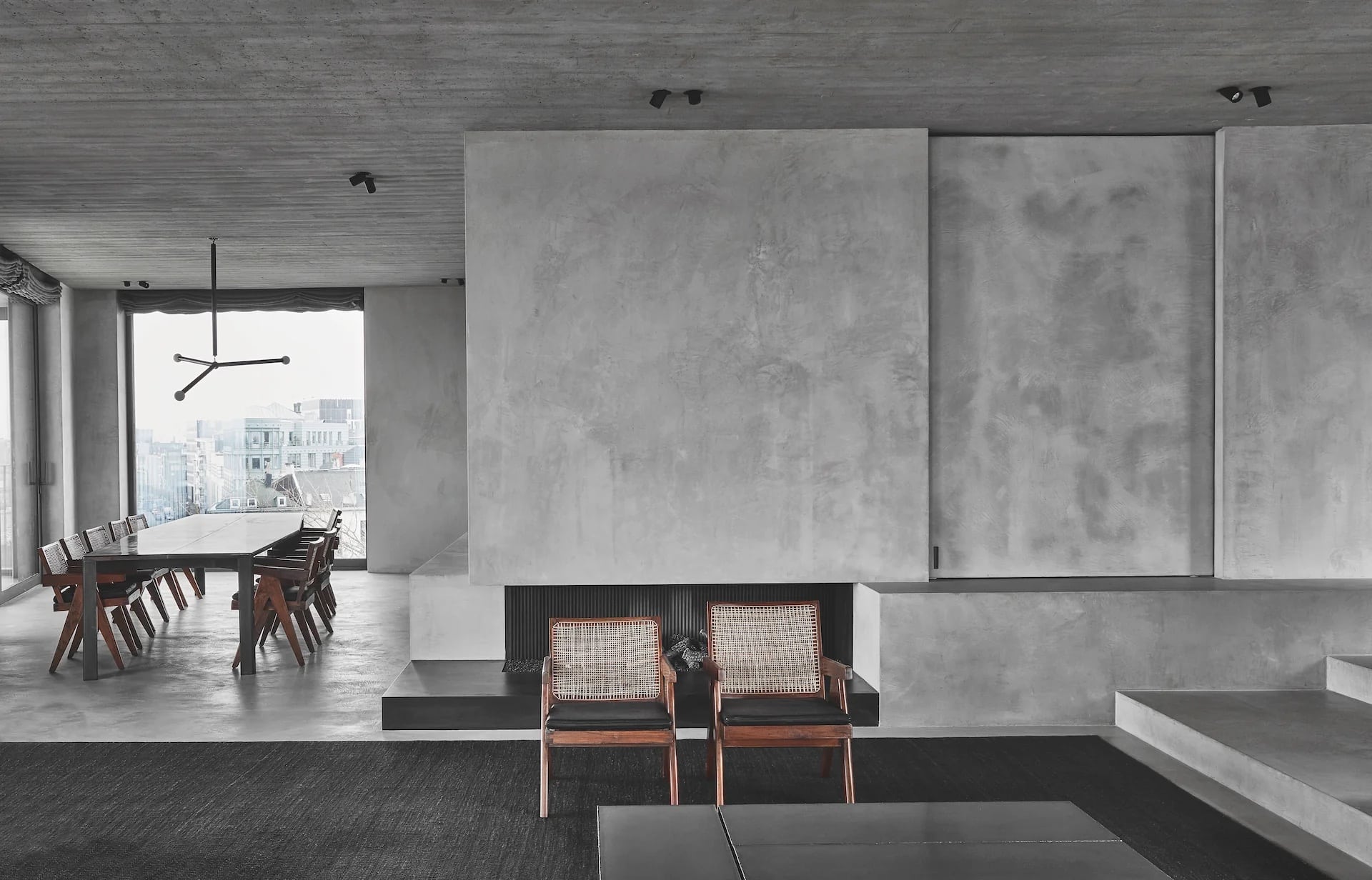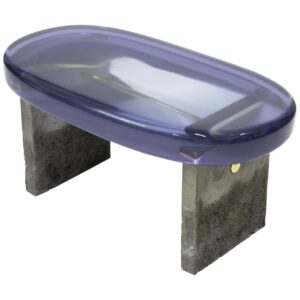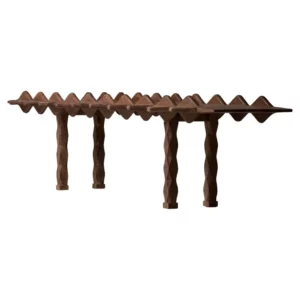
Daniella Ohad

Daniella Ohad is a design historian, connoisseur, educator, curator, writer, talk show hostess, and an influencer, who received her PhD degree from the Bard Graduate Center for Studies in the Decorative Arts, Design and Culture.
Her commitment to modern design history includes extensive work in education in the field of design culture; history and theory; interiors; material culture; contemporary design; connoisseurship; and the decorative arts. She has taught in some of the world’s leading art institutions, including the School of Visual Arts, Pratt Institute, Parsons New School for Design, Cooper Union, and the New York School of Interior Design, and has spoken worldwide in conferences, events, and symposiums in museums, cultural institutions, and television networks.
Her writings and critiques have been published in magazines and peer-review journals, helping to raise awareness and support to the significance of 20th-century design. Her media appearances and programs she has curated and hosted include: Dialogues with Design Legends at the 92nd Street Y; the talk show Spring/Harvest Dialogues on design and architecture; public programs at the AIA. Ohad is a moderator in various design events and has hosted some of the leading talents in the world of architecture and design on stage; her new video program The Collector comes to inspire her audience to live as collectors. Her new podcast Designing the 21st Century presents visionary talents from the world of design and architecture who have helped shaping contemporary design culture. She has been a member in various acquisition committees in NYC museums, and her blog Daniella on Design attracts hundreds of thousands of readers weekly. She lives and works in New York City.
Daniella, you are a very valuable voice when it comes to Collectible Design. A historian, an educator, a design curator and a collector yourself. It is a great pleasure to have you with us today.
1. Could you tell us your first memory related to design? How did your journey and passion in design start?
I am from Israel and I grew up in Israel in the 70s, when there was really no talk about design. Architecture, yes, but not design. My father was a pioneer of exotic fruits in Israel and I grew up on a fruit farm. We had a beautiful, modernist house. But design, furniture design was not in the conversation at all. However, my grandmother who lived in Haifa, had the most gorgeous house with the most beautiful garden. She collected Biedermeier furniture in the 50s, when nobody wanted Biedermeier furniture anymore, when they moved away from antiques to modern. They all knew that she’s the one who buys everything. And so she really filled her house with Biedermeier furniture. Her house very beautiful and tastefully put together. That was my dream house, and I think, that is where my passion for design really started. This is where my aesthetic sensibility was born.
2. Your journey started in Israel and then you moved to New York. Has there been a defining moment in your career to pursue design? An event that has changed the flow significantly perhaps?
Yeah, it’s very very clear what my defining moment was. When I teach people, I teach a lot about collecting and about taste and design. I always say that you never know where your defining moments are going to come, where your passion is going to grow, where you will find your own self. For me, it happened when I was 25. I was living in New York already at that time, had just moved there actually and we bought a house that was filled with furniture by George Nakashima. The people we bought the house from had been collecting his work for many years. If we wanted, we could buy some of the pieces along with the house. And we did that. We bought the house, plus some of the pieces. We always wanted to go and visit him. So when I was 25, we went to visit Nakashima in his studio in New Hope, PA.
I think that was my defining moment because, when I see the way he lived and the way he spoke about what he does, I was very impressed. It was the first time I heard somebody speak about furniture this way, that furniture is not you a chair you sit on, but it has so many spiritual aspects. And also his house was particularly amazing. I was very lucky with this, because at that time, people who bought George Nakashima, were really loyal customers. That’s how he worked. You could go to his studio and order pieces, but most of his clients were returning clients or that their entire house was furnished with his furniture, which they have done over the years. He perceived his role as a designer and that was very inspiring to me. I already had a degree in Art History. But at that time you didn’t study anything about contemporary. You just studied about history. I was very, very much in love with 19th century art, particularly the pre-Raphaelites, but we didn’t talk in college at all about furniture and design. So this is how I started to live my life with design. And when you live your life with design, it makes a difference and that’s where it started.
3. Since you are an educator, and write profusely about this subject and curate exhibitions among other things, how would you define collectible design? What is collectible design for you?
I’m very lucky to have grown up the way I did, because of course nobody called the furniture in the 80s or 90s Collectible Design. There was not even such a name. But I grew up with the field and I saw in front of my eyes how galleries starting to emerge, how auction houses started to include design pieces in their sales little by little, which was not even called design. They were called art deco or art nouveau. And I was a part of this. I was living with design, studying for master’s degree in decorative arts, and teaching at the same time. I have a very strong idea about what collectible design is because I’ve been in this field for so many years and I see the changes and how shifts are happening all the time, even from one year to the next. If you are not on top of it all the time, you can lose it completely.
Very simply put, Collectible Design is a piece of furniture or object or light pieces, that is going to have value in the future. I’m not saying what the value will be. If you buy for example a piece of furniture by Charlotte Perriand, which, at its creation was designed for social housing, it will have a value in the future. Because over the years, it became collectible design. Why did her pieces become collectible design? Because there is something about these pieces that needs to be inserted in the history of what one calls Collectible Design and innovation and the very awareness of the time, the zeitgeist. An awareness of materials, technologies, the narrative of the world at the time.
It is the same for contemporary art. It needs to have the content and a narrative that is related to the time. It has to have something innovative, some kind of expression of the identity of the designer, a strong personal identity. Also, the craftsmanship, the tradition is something that people are very much looking at today. If a piece of furniture does not have craftsmanship, it’s not going survive the test of time. Nothing machine-made is going to be collectible. Maybe in the 1950s, yes, because the use of machinery in furniture was an innovation then, but today no.
So the innovation is always about relevance to the time. That is why the designers of today have to be very, very smart. Similar to the people in the stock market, for example, they need to know what is good, what is happening in the world. To be ahead of your field, you need to really know everything and almost foresee what’s next or be very much in tune with the times.

4. You have recently curated the exhibition titled The Female Voice in Modern Design, 1950-2000 at Carpenters Workshop Gallery. I know you worked on this exhibition for a long time, researching the decades, and it maybe a simplified question, but I wanted to include it for our readers. What has stood out for you as the pivotal role of women designers in this 50-year long history?
Well, first of all, it was also for me a journey in research because I didn’t really know what I was going to find exactly when I started. The fact that I focused on female designers is because it’s a topic that people want to know about. There are lots of books written about it. So I thought it was a really good topic to explore further. When I started digging into it, I saw that the majority of the issue is that women, very much until the 21st century, didn’t really get enough attention. In many cases, the women were working and creating design, but the design was attributed to their husband or to their male partner. And you have this whole history written very wrongly.
You see a work by Ico Parisi. But he worked with his wife Luisa Parisi. She did a lot of it. But that’s not written. There were many stories like that. I have found that it changed a little bit in the 70s in Italy. In the 70s in Italy, you see women but it was always a struggle for them. Because also at that time, women had a role in the house and everything. It was very demanding to be a designer. It’s not a profession where you go in the morning and then come back at night. Being a designer is a 24/7 job. And later on in the 90s, you see that it’s starting to change, and then of course in the 21st century it changes even more. There are amazing accomplishments by women who came to the forefront of design history with pieces that are very good design, deserving to be in the history books.
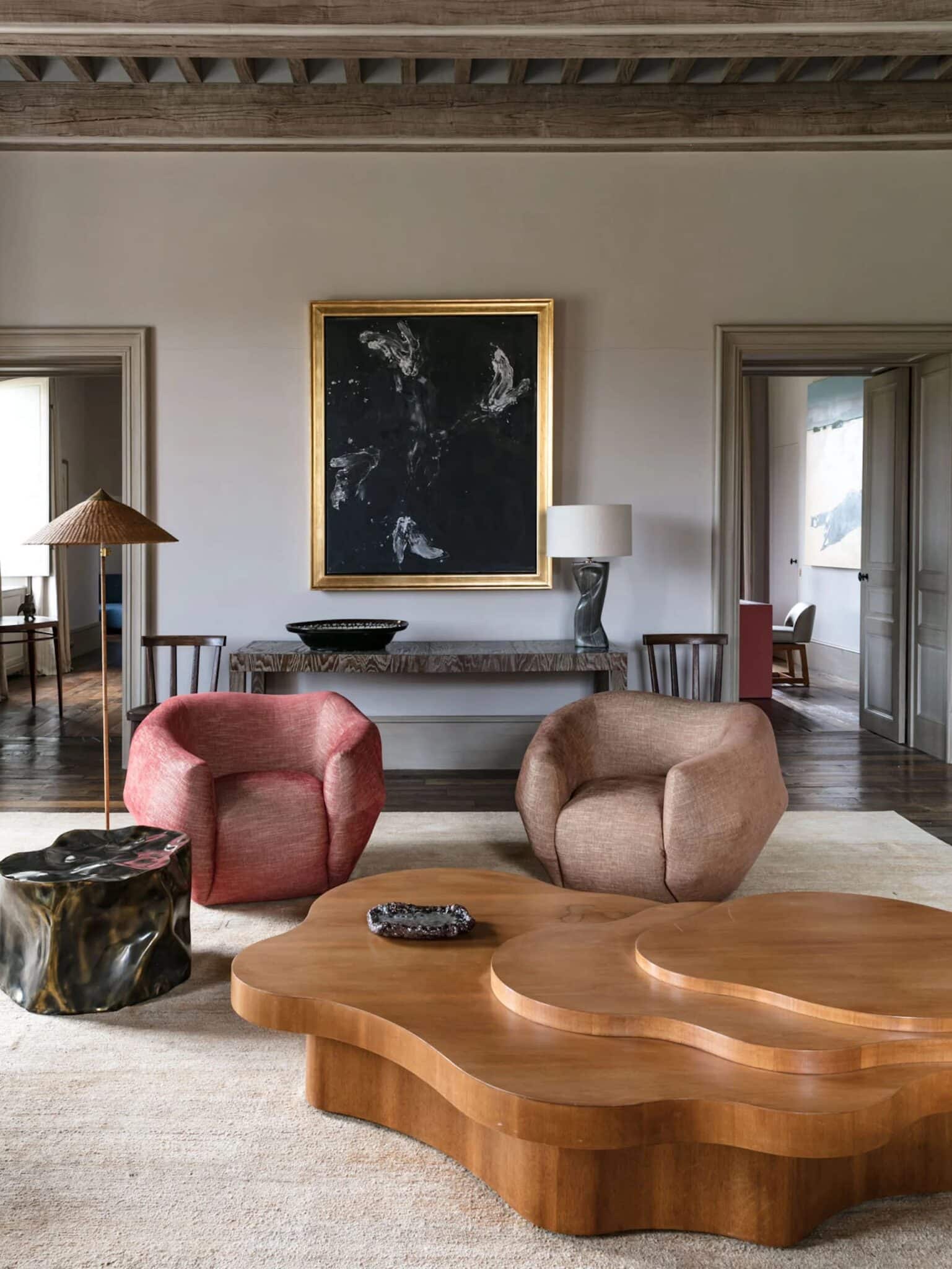


5. You mentioned that you would work on the second half of the exhibition and that you would explore whether the design history is more favorable to women in 21st-century. After the 2000s, do you think it’s a question of men and women anymore? Because also, the notion of gender has become much more fluid. What are your impressions of the 21st century?
In a way, after the 2000s, there is not a big difference between male and female designers anymore. Not at all. However, there is a question that there is no answer to, and it is this: When you walk into a first year class of interior design in any college, and I’ve been teaching in many colleges, you see maybe maybe 90 % of the students are women, always. And then when you look at who are the leading voices in interior design today, or a decade ago, or two decades ago, you do not see any women, youg see very, very few. Why is that? This is the question.
I did a couple of seasons of “Interior Design: Then and Now” for Christie’s. I interviewed the best talents, the most prolific, the most important talents in interior design in the world. Then I published in the magazine, the forum, all my talks. If you look at the names, you’re going to see, let’s say I do 10 talks a season, maybe one woman. Why is that? Why that when it comes to that level of success there are very few women. It’s not that there are not women. There are many, many women in interior design. But if you look at the innovation of interior design, at the best interiors made in the world, then it’s mostly men, not all, but mostly. It is a question that nobody has the answer to. The higher you go up the ladder, the less women you’re going to see. But when you go down the ladder, when you look at what happens in the schools, you’re going to see that they’re all women, you know what I mean?
I know exactly what you mean. I guess there are many questions to ask to answer that one, which I’m not going to go into for our interview, but yes, I think it’s similar in many other domains and not just in interior design.
6. My next question is in relation to the history of design but also to contemporary times. How do you think furniture design and interior design have changed over the last few decades?
Since the 90s, there is the growing tendency that the most innovative furniture design is not made industrially. There are a couple of exceptions, but if you look at the majority, it’s very, very separate from the world of furniture that we know that collectible, the most innovative furniture. Most of the innovation is not done in the industry anymore. If you go to a places where they sell “design within reach”, you are not going to find anything that is really really interesting, anything that is really going to museum collections. Things that tell something about the period, like how I defined before as good design. So I find that furniture design moved to the galleries’ arena, to the studios, outside of the industry. This is about furniture, and it has really started in the 90s.
About interior design, it has completely changed over the past 20 years. It’s not what it was. It is much more interesting, complex and intriguing now, with the idea that there is a personal identity in the home. People who work with interior designers to do their homes, they’re very involved because it’s their own home and they don’t want it to be duplicable, to look like a furniture showroom, which is really what 95% of the interior design in the world looks like. That’s not the interior design I would cover in my writing, or anybody’s going to write about 100 years from now.
If somebody will write 100 years from now as a story of interior design of our time, they’re not going take the interiors with furniture from stores because there is no really spirit in it. Interior designers have a very hard job now. It’s not what they did in the 90s. Now, they have to create. To connect the people to their interiors, make the lives of the people who live in their spaces different, transformative. To have such a good interior, is really very effective on the entire family life, the entire way you live and feel. This is now the job of the interior designer. They go from one gallery to the next, from one studio to the next, and to chose the right pieces. It has become very personal.
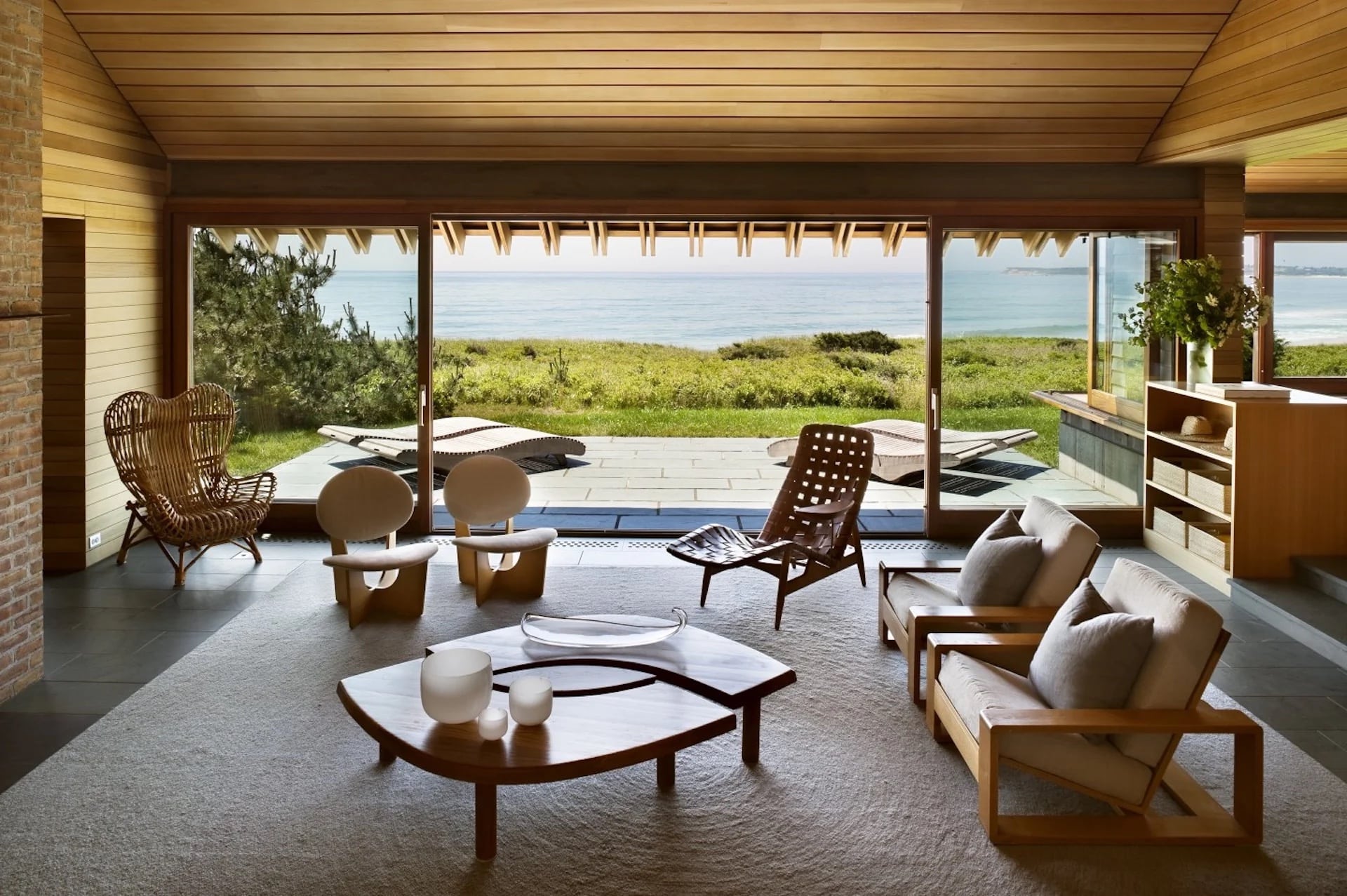
7. Do you have a design mantra; something that encapsulates your view on good design?
Yes. The more you look at design, the better your taste becomes. The more you learn and invest your time in design, the better your taste is going to become. Nobody is born with taste and taste is also something that is not objective. It’s very, very subjective. I can look at something and say “it’s not my taste, but it’s good taste”. You can very easily define good taste. To get good taste, it’s a lot of work. You have to travel the world, you have to see and be exposed to things, and then your taste becomes better.
8. You have an incredible experience both with the history of design and the contemporary design scene, so I have to ask you: What advice would you give to young designers who are maybe graduating?
First of all, when you leave college is when you start. It is when you start studying. In college, you get the degree. You get maybe a little bit of something else. But after school is when you start studying. I also would say that you always have to be on top of things. You have to read everything, to visit fairs and galleries. You have to read, learn, and study. This is what I do. I teach designers, I teach them how to become better, how to be aware of the world.
You cannot know when you start, you can never know where you’re gonna end up. I think the best advice that I give to young designers is based on my own experience. I didn’t know what I was going to become, but I worked all my life, very, very hard. When I started, there was no internet. I used to publish articles, used to make no money. So one needs to always be persistent, and never leave, never leave the profession. Once you leave, that’s it, you’re gone. You have to always work really hard. Do whatever you can and then you never know when the next door will open to you. But you have to be hard working. Nobody is going to succeed without working really hard all the time.
9. Let’s go to the other end of this field. What advice would you give to collectors of design? If someone is interested in having a good collection of design, what should they do, aside from following you? 🙂
I think that if you go to this world without an advisor, it’s a huge mistake. I myself would never bring anything into my home without asking the advisor, the interior designer, because I’m not an interior designer. So going into the marketplace without an advisor is very wrong, because the advisor is the one that can really lead you to make the right choices.
I look at auctions all the time and see the catalogs and results that are ridiculous. Things that are still in production in limited edition are being sold for three or four times more expensive in the auctions than you can still buy in a production. So you make a mistake. I think that interior designers should really also use the work of advisors because to be an advisor you have to really be on top of it all the time. If you’re an interior designer, there is no way you can be on top of it in the way the advisor can. When you go to a contemporary design exhibition like yours, the only one who has the eye to decide which piece in the exhibition is the best is just the advisor.
10. What are your 3 favorite pieces from the Philia Collection?
-
Antigone Pendant Lamp by Elsa Foulon
€7,140Golia Bench by Draga & Aurel
€7,08011. Finally, what are your upcoming projects? I know you are doing a lot of things, but if you would like to share a few of them with us, that would be great.
My most upcoming project is my blog. It is called Designing the 21st Century. This season, I decided to do it both video and audio. In September, I start with Christie’s on Furniture Design: Then and Now. I’m going to have 10 sessions. Half of these is going to be about today’s furniture designers and then it will be about furniture design of the past, because you cannot know contemporary without knowing the history.
Thank you so much Daniela, it has been wonderful hearing your perspective on so many great topics.
